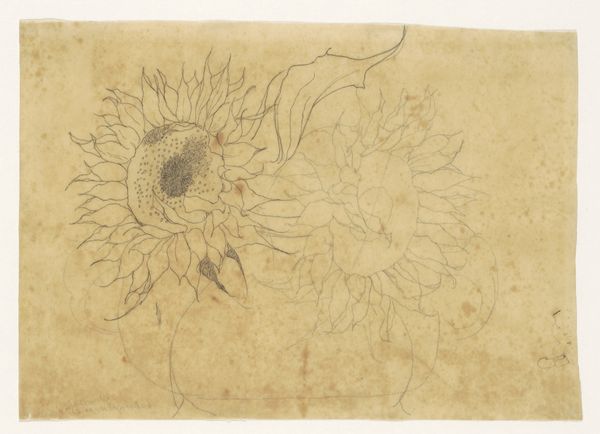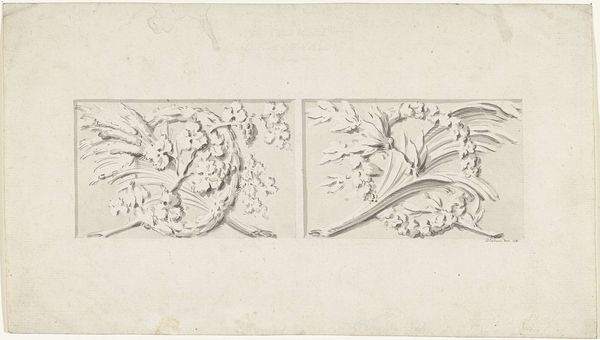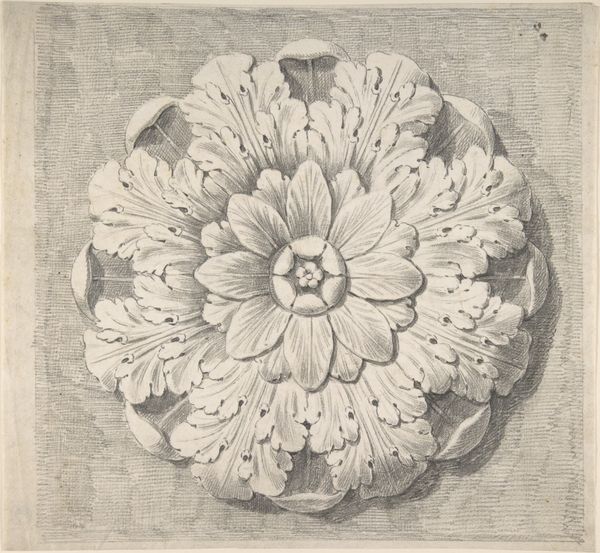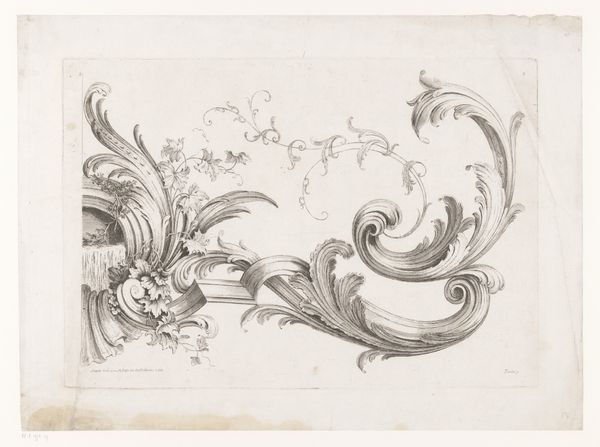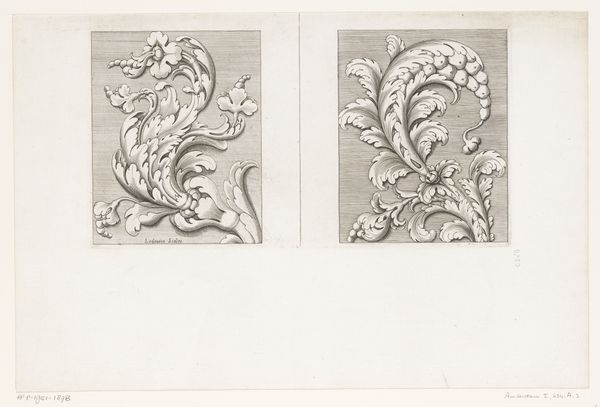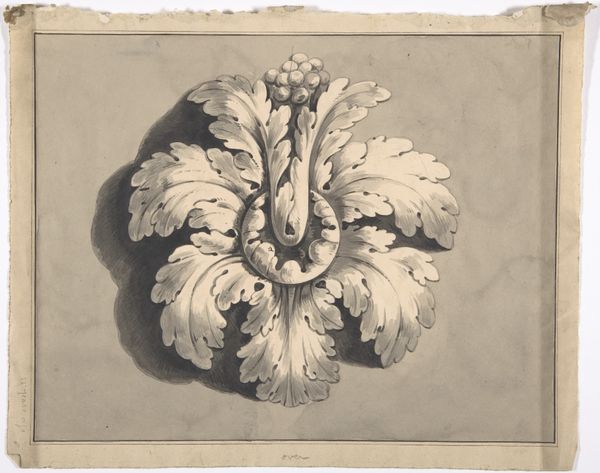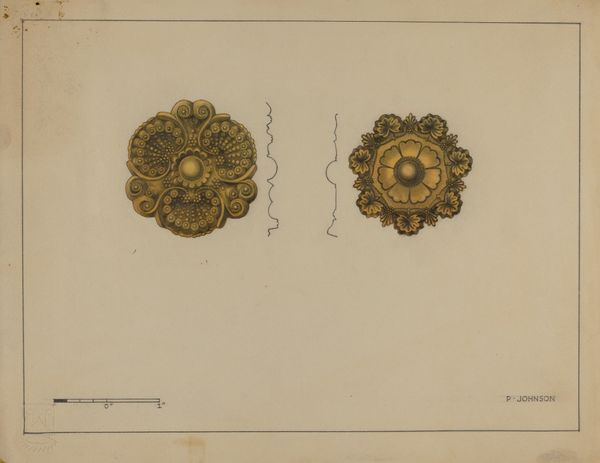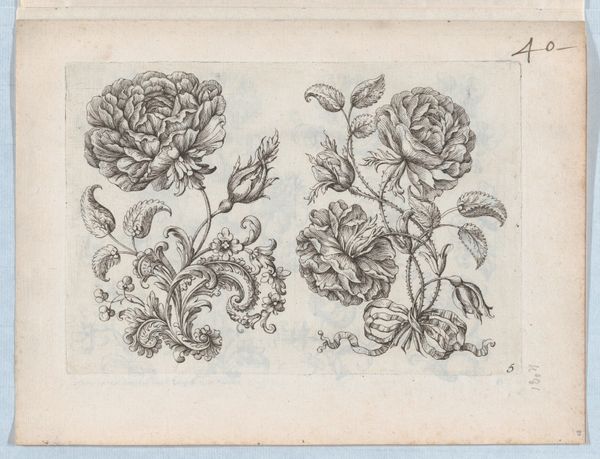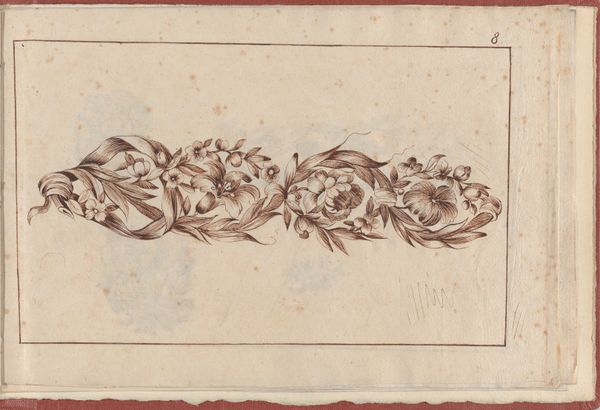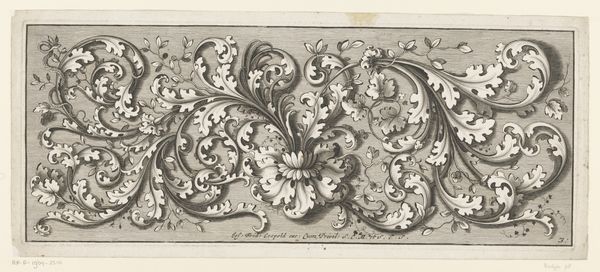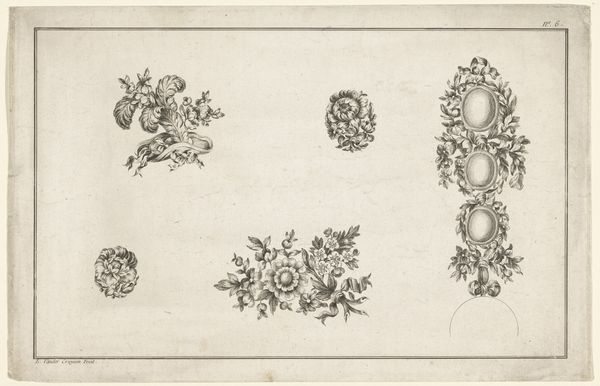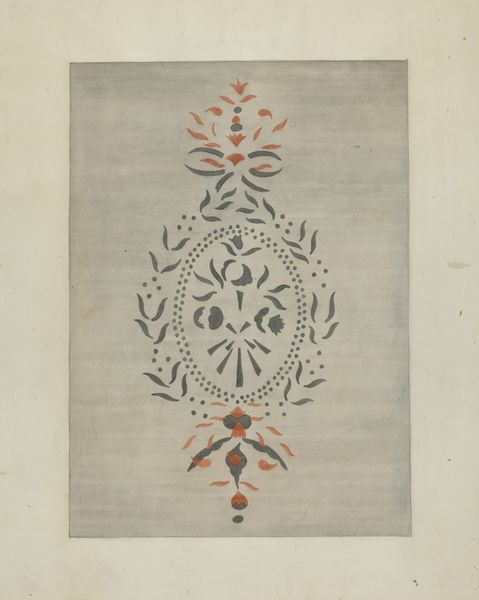
drawing, paper, pen
#
drawing
#
paper
#
form
#
coloured pencil
#
geometric
#
line
#
pen
#
academic-art
Dimensions: height 309 mm, width 449 mm
Copyright: Rijks Museum: Open Domain
Curator: This drawing, "Twee Rozetten" or "Two Rosettes," dates to 1776 and is by an artist known only as Monogrammist DL. It’s rendered in pen, coloured pencil and ink on paper. I find the formality of the academic art style very striking, despite the relative simplicity of the composition. Editor: There is indeed a striking elegance! The draughtsmanship really leaps out, even with the limited color palette. They feel like emblems, like suppressed energy rendered as controlled design. Curator: They're architectural ornaments of some kind, one guesses? We see rosettes appearing frequently during that period. Consider the political and social context of 1776; the rigid hierarchies, and the rise of the decorative arts to legitimize power... It’s interesting to see such careful attention lavished on something that seems purely ornamental today. Editor: True. Although, ornament is never 'purely' ornamental. The radiating petals of the rosette motifs could have had diverse meanings— referencing the sun as a symbol of divine authority or the wheel of fate and cyclical time, but either way the circle in most eras equates to concepts of totality. There’s an almost meditative quality to the repetition within each form, what do you suppose they adorned? Curator: The design of furniture perhaps? Or interior wall embellishments? It's precisely this ambiguity of purpose that intrigues me. We see these stylized flower-like forms replicated across countless objects, signifying a shared aesthetic language among the elite, yet their function in that society shifts and changes depending on socio-political changes within the upper class, so although these particular illustrations hold specific ornamental status, the imagery alone means much more in social culture. Editor: The shadow details are superb, adding depth that pulls the eye and reinforces their three-dimensional nature even as two-dimensional art. It could almost be symbolic of that intersection between nature and order which so much design strives towards. It definitely leaves an impression. Curator: Precisely. Studying how such images operated within society underscores how much meaning can be embedded even in seemingly innocuous designs. Editor: Agreed, it reminds us of art’s public role in shaping perceptions. I’ll certainly see rosettes differently now!
Comments
No comments
Be the first to comment and join the conversation on the ultimate creative platform.
